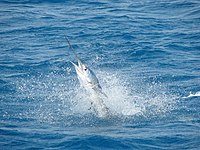
Range expansion and first observation of Tridacna noae (Cardiidae: Tridacninae) in American Sāmoa
Sign Up to like & getrecommendations! Published in 2022 at "Ecology and Evolution"
DOI: 10.1002/ece3.9635
Abstract: Abstract Giant clams are ecologically important, benefitting species of all trophic levels. But numerous populations have declined drastically in numbers due to past intensive exploitation that led to their listing in both CITES Appendix II… read more here.
Keywords: tridacna noae; giant clams; range expansion; first observation ... See more keywords

Genetic diversity of giant clams (Tridacna spp.) and their associated Symbiodinium in the central Red Sea
Sign Up to like & getrecommendations! Published in 2017 at "Marine Biodiversity"
DOI: 10.1007/s12526-017-0715-2
Abstract: The biodiversity of the Red Sea remains relatively understudied, particularly for invertebrate taxa. Documenting present patterns of biodiversity is essential for better understanding Red Sea reef ecosystems and how these ecosystems may be impacted by… read more here.
Keywords: symbiodinium central; sea; genetic diversity; giant clams ... See more keywords

Drastic decline in giant clams (Bivalvia: Tridacninae) around Mauritius Island, Western Indian Ocean: implications for conservation and management
Sign Up to like & getrecommendations! Published in 2018 at "Marine Biodiversity"
DOI: 10.1007/s12526-018-0858-9
Abstract: Giant clams (Tridacninae) are largely threatened globally, but information regarding their distribution and abundance is deficient in many locations, including in the Republic of Mauritius, situated in the Western Indian Ocean region. In this study,… read more here.
Keywords: indian ocean; conservation management; decline; western indian ... See more keywords

Analysis of inbreeding depression on performance traits of three giant clams (Tridacna derasa, T. squamosa, and T. crocea) in the South China Sea
Sign Up to like & getrecommendations! Published in 2020 at "Aquaculture"
DOI: 10.1016/j.aquaculture.2020.735023
Abstract: Abstract Inbreeding depression is common, especially in hermaphroditic animals, and causes a decline in biological fitness. To evaluate the effects of inbreeding on giant clams, two by two factorial cross experiments between individuals were conducted… read more here.
Keywords: depression; inbreeding depression; giant clams; squamosa crocea ... See more keywords

Effects of three light intensities on the survival, growth performance and biochemical composition of two size giant clams Tridacna crocea in the Southern China Sea
Sign Up to like & getrecommendations! Published in 2020 at "Aquaculture"
DOI: 10.1016/j.aquaculture.2020.735548
Abstract: Abstract Giant clams are able to grow in oligotrophic tropical marine environments with the aid of photosynthates from its symbiotic zooxanthellae. Therefore, light intensity affects the survival and growth of giant clams, and is one… read more here.
Keywords: tridacna crocea; survival growth; giant clams; two size ... See more keywords

Symbiont photosynthesis in giant clams is promoted by V-type H+-ATPase from host cells
Sign Up to like & getrecommendations! Published in 2018 at "Journal of Experimental Biology"
DOI: 10.1242/jeb.177220
Abstract: ABSTRACT Giant clams (genus Tridacna) are the largest living bivalves and, like reef-building corals, host symbiotic dinoflagellate algae (Symbiodinium) that significantly contribute to their energy budget. In turn, Symbiodinium rely on the host to supply… read more here.
Keywords: photosynthesis; photosynthesis giant; giant clams; type atpase ... See more keywords